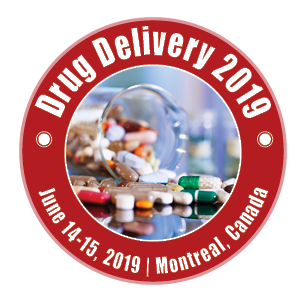
Julio Cesar Fernandez Travieso,
National Centre for Scientific Research, Cuba
Title: A preliminary retrospective analysis of the effects of policosanol on ischemic stroke patients
Biography
Biography: Julio Cesar Fernandez Travieso,
Abstract
Introduction: Stroke is one of the leading causes of mortality and disability. Clinical studies conducted in patients with a recent ischemic stroke and treated with policosanol (20mg/day)+standard aspirin (AS) (125mg/day) therapy have shown benefits versus placebo+AS to patients with recent ischemic stroke.
Objectives: The objective of the present paper is to a preliminary retrospective analysis of the policosanol treatment effects in the patients included in ischemic stroke recovery trials.
Methods: This report analyzed the records of all patients included in four ischemic stroke recovery studies. Patients with a modified Rankin Scale score (mRSs) 2 to 4 were randomized, within 30 days of onset, to policosanol+AS or placebo+AS, for 6 and 12 months. The primary outcome was an mRSs reduction. Decreases on low-density lipoprotein-cholesterol (LDL-C), total cholesterol and increases on high-density lipoprotein-cholesterol (HDL-C) were secondary outcomes.
Results: Two hundred and seventy-one patients (mean age: 67 years) were included in the analysis. At the six months more policosanol+AS (117/136, 86%) than placebo+AS patients (10/135, 7.3%) achieved mRSs goals. In correspondence, at the 12 months of the study more policosanol+AS (50/59, 84.7%) than placebo+AS patients (5/59, 8.5%) achieved mRSs goals. Treatment with policosanol+AS significantly decreased mean mRSs from the first interim check-up. The treatment effect did not wear off, even improved, after 6 and 12 months therapy when the net decrease versus placebo+AS was 56% and 70.8%, respectively. In addition, policosanol+AS reduced significantly LDL-C (21.6%) and total cholesterol (12.5%), and increased HDL-C (6.3%). Treatments were safe and well tolerated. Eight patients reported serious adverse events (6 placebo+AS, 2 policosanol+AS) and other 13 patients (8 placebo+AS, 5 policosanol+AS) reported moderate or mild adverse events.
Conclusions: The preliminary retrospective analysis of the effects of policosanol+AS on ischemic stroke patients indicate that this treatment for 6 and 12 months proved to be more effective than the placebo+AS treatment in the functional recovery of these patients.

